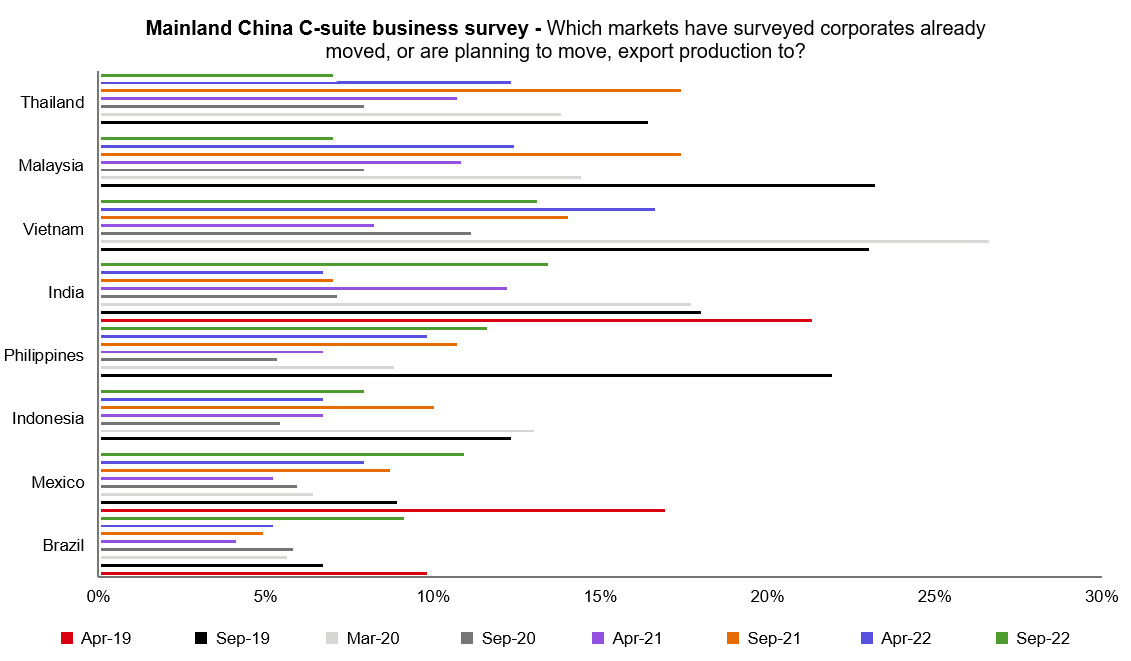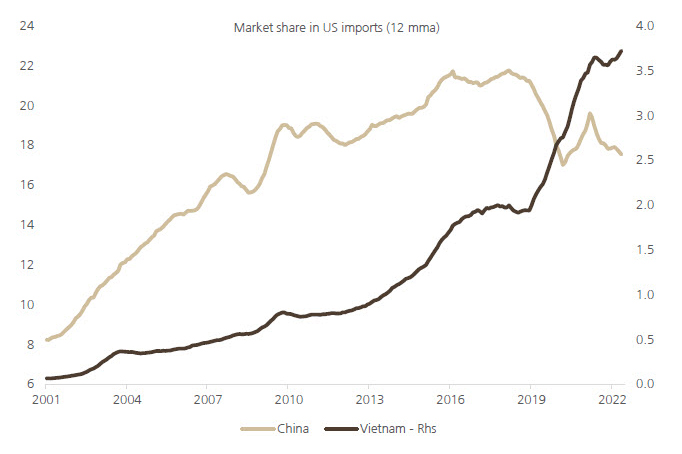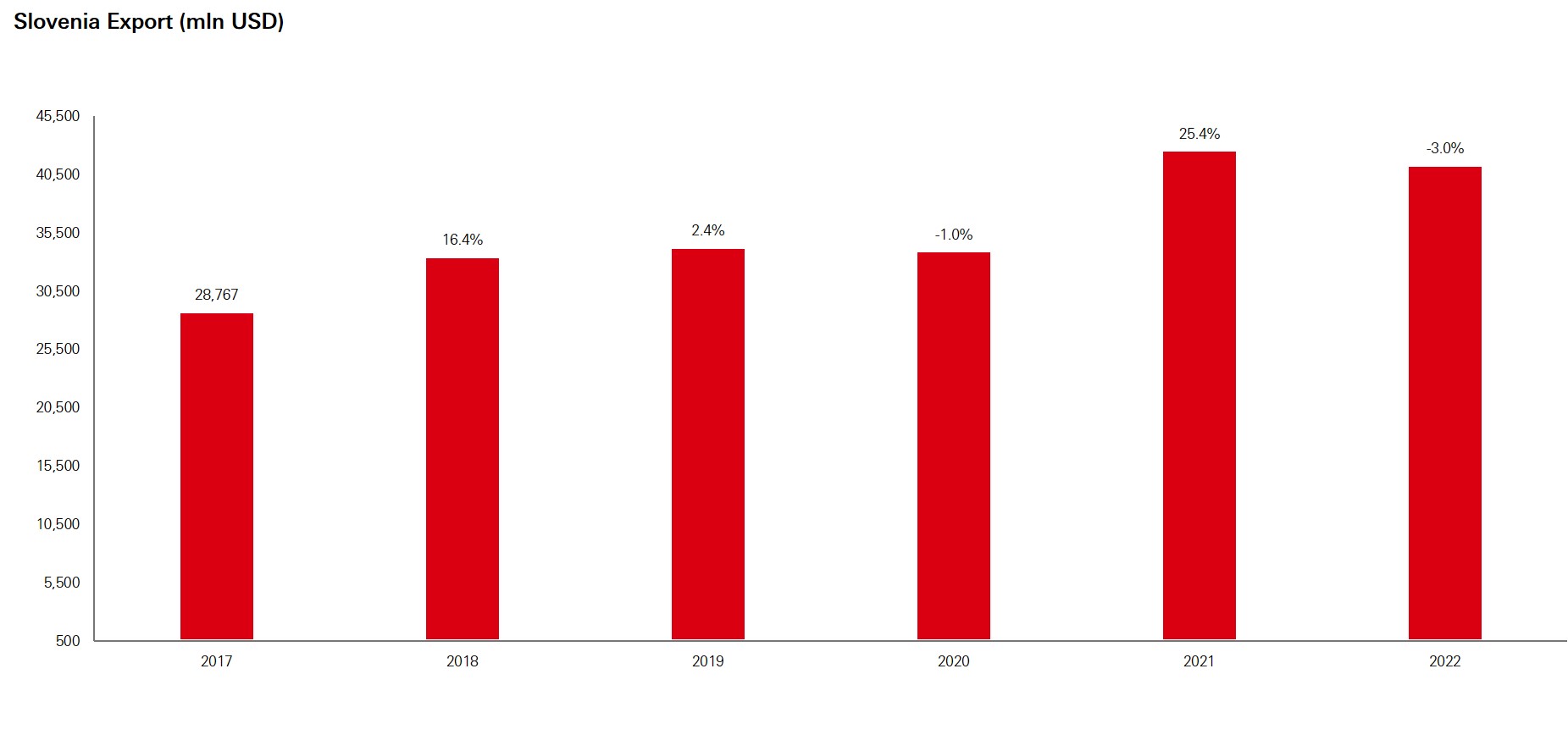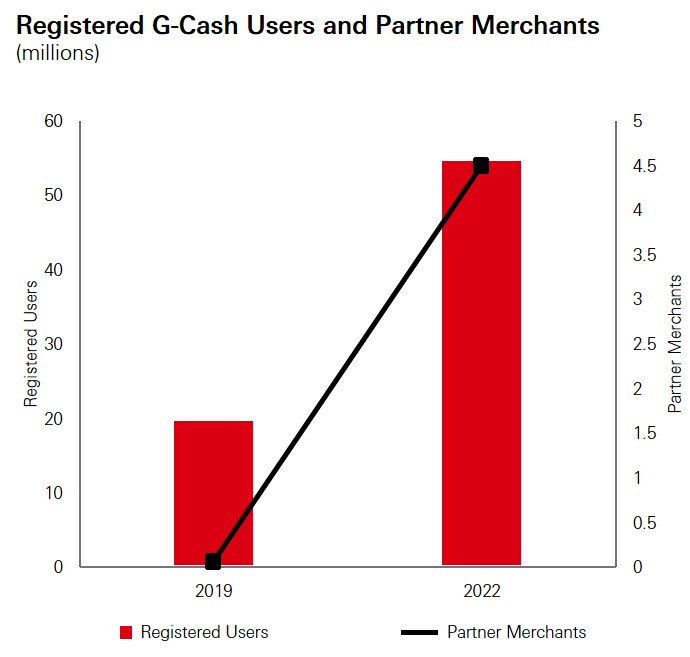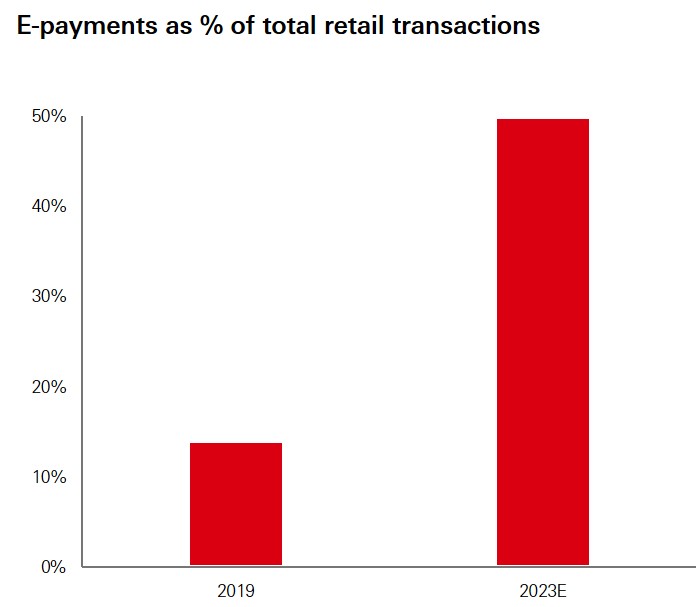Three themes structurally changing Frontier Markets
Key takeaways
- Manufacturing hubs moving to Frontier countries as China stops being the low cost manufacturing base it once was
- Supply chain disruption during the pandemic proved that manufacturing hubs should be distributed around the world
- Digital uptake increases across Frontier Markets due to behavioural change and state sponsored initiatives
Manufacturing hubs moving to Frontier countries
As political tensions heighten and China stops being the low cost manufacturing base it once was, many global corporates are beginning to look elsewhere to relocate manufacturing. Vietnam is a key beneficiary due to its skilled and cost efficient labour force, in addition to required infrastructure and regulations needed to support continued FDI inflows. The below shows the preference of many corporations with Vietnam consistently being a destination for production.
Source: UBS Evidence Lab, HSBC Asset Management as at 31st March 2023
With Vietnam becoming a hub for production, incomes will begin to rise, growing the level of disposable income for middle classes, creating tailwinds for the full economy with all sectors being buoyed by increased spending.
The US is becoming a key trade partner for Vietnam as political tensions between the US and China intensify. As shown below, Vietnam has overtaken China in terms of US imports. The outbreak of the Delta COVID variant in 2021 halted Vietnam’s market share gains. However, in recent months’, momentum has begun to pick up with manufacturing having significant room to grow.
Source: Haver, UBS
Diversification of supply chains
Disruption to supply chains during the pandemic proved that manufacturing hubs should be distributed around the world and not limited to East Asia. Prior to the pandemic, Slovenia was making headwinds in gaining global trade market share. With the redistribution of manufacturing hubs and companies wanting to be closer to end-consumers, Slovenia is well positioned to grow. The below shows the significance of Slovenia as a manufacturing hub for the EU and being one of the richer emerging European countries, well positioned to capitalise and be a first mover in the nearshoring theme.
Source: World Bank, HSBC Asset Management as at 31st December 2022
Additionally, Romania has the opportunity to access EUR 80bn of European funds, which is around 27-28 per cent of its current GDP. This should significantly increase the manufacturing base of the country in the next couple of years.
Overall our outlook on Eastern European countries is one of opportunity.
Rise of digitalisation
We are seeing Frontier Markets accelerate digital uptake, this had previously been a lagging factor. More and more companies are using technology to improve internal management, purchasing, logistics, production, marketing and financial transactions. COVID has had a large responsibility, coercing behavioral change.
In the Philippines the swift uptake of e-wallets has meant more people are now using e-wallets than bank accounts. Globe Telecom, the 2nd largest telecom operator in the country has witnessed rapid user growth. Their Gcash product is currently the largest E-wallet operation in the country, below are two charts that illustrate the changing trend:
As of 2022, 83 per cent of Filipino adults had a G-cash e-wallet compared to only 51 per cent having a bank account as of 2021
Source: HSBC Asset Management as at 31 March 2023
There has also been a rise in state sponsored initiatives across constituent countries in the Frontier Markets.
Vietnam approved the National Digital Transformation Programme through 2025, with a vision towards 2030. This is a main cog facilitating Vietnam to achieve its ambition of becoming a high-income economy.
Kazakhstan also launched ‘Digital Kazakhstan’, aiming to create a new model for the economy, prioritising large-scale modernisation of the country’s IT infrastructure businesses and extending access to rural areas. The introduction of digital technologies by 2025 is expected to generate USD40 trillion.
E-Finance is spearheading Egypt’s digital transformation and its government’s tool for the push towards digitalisation. We anticipate significant growth over the next decade and expect Egypt to easily double non-cash transactions as a percentage of GDP.
The investment case
The case for Frontier Markets funds
- Attractive valuations. Frontier Markets are trading at a far greater discount to Emerging Markets than the historical average
- High dividend yields. The Bloomberg 12-month forward dividend yield is 5.3 per cent compared to 3.5 per cent for Emerging Markets
- Superior earnings growth. Driven by structural change, Frontier Markets earnings growth is expected to remain strong in 2023 – running at 13 per cent compared to negative growth for Emerging Markets
Source: HSBC Asset Management, Bloomberg, as of 31 December 2022


